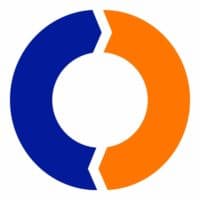
Facing one of the most severe economic contractions in U.S. history, many small businesses are struggling for survival. For most businesses, as business slows, contracts are delayed, or supply chains are disrupted, the impact is felt almost immediately in their cash flows.
Even as the health crisis appears to be receding in many parts of the country, it could be several months before the economy returns to any semblance of normalcy. With an eye toward that future, many small businesses need to rethink their approach to cash flow management.
Forecast Cash Coming In
With the cash cycle in many businesses running about 90 days, it is essential to have a granular understanding of your sales backlog and sales cycle, along with the lead times for purchasing and production. Depending on the length of your sales cycle, most of the sales for the upcoming quarter may already be in your sales backlog. It should also be easier to develop a weekly sales forecast for your larger and more reliable customers. If you have a long sales cycle, you should be able to create a more accurate forecast for the next 13 weeks.
Your forecast should also include any sources of cash you expect to receive from government stimulus programs, such as the Payment Protection Program (PPP) and Emergency Injury Disaster Loans (EIDL).
You will also need to break down how your customers pay their bills (payment terms and histories for each customer), especially your larger customers, so you can estimate when cash payments will be received. The key is to group customers with similar payment patterns so you can more accurately map your cash receipts on your forecast. Of course, you will have to apply health crisis considerations, such as any supply chain disruptions and state-enforced restrictions on commerce.
Essential Action Step: Get on Top of Your Receivables
Now is not the time to play coy with customers who are behind on their payments. In the current environment, most customers will understand the necessity of on-time payments. Create a receivables aging report sorted by the amount owed. By focusing on the larger amounts first, you will achieve your objective faster. The report should be reviewed each week by your management team and billing department to give it the visibility it needs.
Going forward, offer your customers a discount for paying upfront. When receivables get over 90 – 120 days old the percentage of collections drop dramatically.
Forecast Cash Going Out
Next, forecast the amount and timing of cash going out of your business for the next 13 weeks. Start by plotting out recurring weekly or monthly expenses that are paid outside of your accounts payable, such as payroll and bank debits. Then review your accounts payable to determine which payments can be stretched beyond their payment terms. Determine which suppliers may be most amenable to establishing a payment plan for past due invoices. Under the current circumstances, suppliers are more likely to be receptive to extended terms. For those who insist on maintaining strict terms, you may have to prioritize based on the importance you attach to the particular vendors.
Essential Action Step: Review Variable Costs
The quickest way to reduce cash outflows is by reducing your variable costs. For many businesses, labor is their largest variable cost. If you qualify for a PPP loan, it could cover your payroll costs for up to two months. If you still need to reduce employee compensation or hours, keep in mind that a reduction in compensation could result in a portion of your PPP loan to be unforgiven. You could consider outsourcing some functions to independent contractors as one way to reduce payroll costs.
You can also consider converting fixed costs into variable costs by selling assets such as equipment or vehicles and then leasing them back.
Stay Current With Your Forecast
The COVID-19 crisis continues to evolve rapidly. Your 13-week emergency cash flow forecast creates a baseline that is likely to change each week. So, it is essential to track your actual performance and make any adjustments on a weekly basis.






